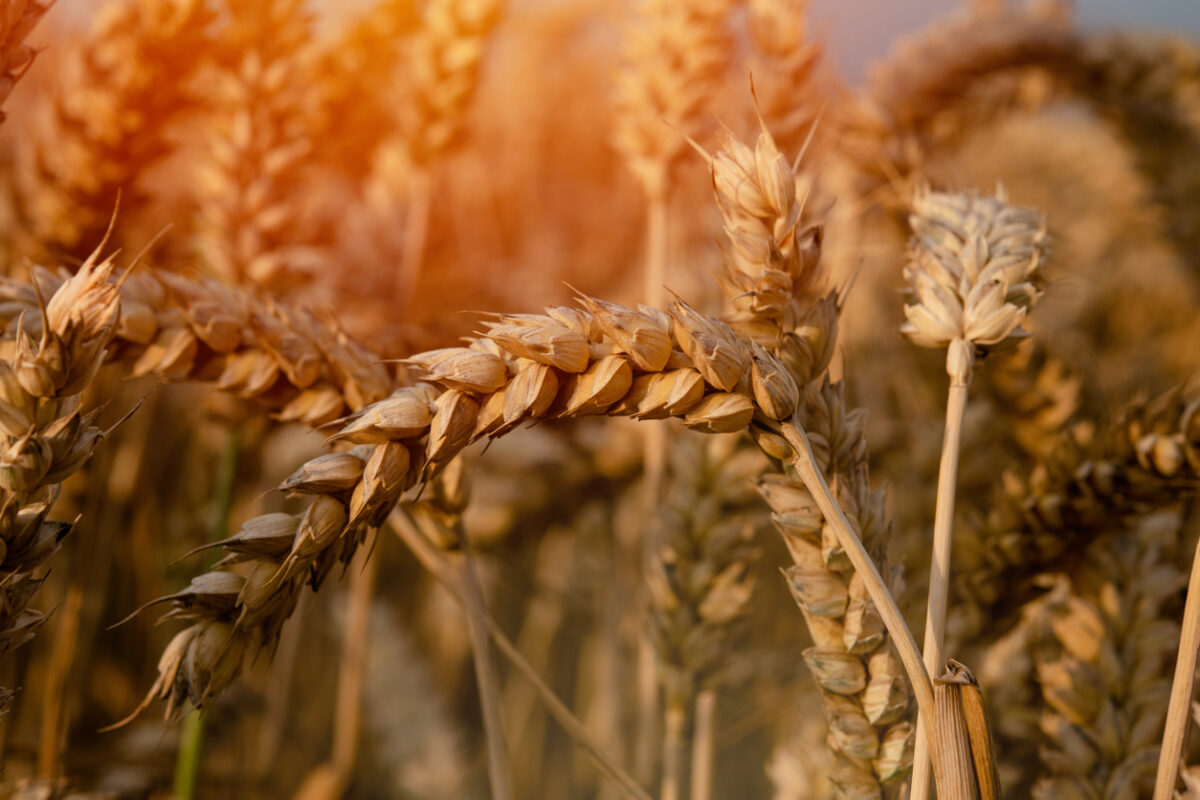The future of Africa: why women, technology and education are key to food security

Agriculture is one of the biggest if not most important sectors for Africa. For many countries across the continent, it is the backbone of the economy and has an enormous social impact. Besides the fact that the continent’s population rely on the industry for its food needs, it also employs approximately 60% of Africa’s workforce according to the World Bank. Research from the Organisation for Economic Co-operation and Development (OECD) and the UN Food and Agriculture Organisation (FAO) also shows that agriculture accounts for 15% of the continent’s total GDP – though between different countries, GDP coming from agriculture can range from 3% in Botswana to over 50% in Chad.
As it is such a vast continent, Africa’s agricultural sector is host to a range of challenges. From the worsening impact of climate change on farming lands, to the rural digital divide preventing workers from making their agricultural practices more efficient, and the weak funding and support for smallholder farmers – the industry needs innovative solutions to ensure its survival.
With these challenges also comes a growth in demand for solutions and an increase in innovators who hope they can address Africa’s most pressing agricultural concerns.
The digitisation of agriculture
Of all the developments in the African agri-food tech landscape over the past decade, the digitisation of agriculture has been one of the most pressing. With the sector being of huge importance to the country, improving technology and support for farmers is a top priority for innovation.
Much development has focussed on advancing smallholder farming technology, as these farmers contribute the most to the food supply – 70% to be precise. Data compiled by McKinsey & Company in 2019 shows that over 60% of the sub-Saharan African population are smallholder farmers, while 23% of this region’s GDP comes from agriculture. According to the International Fund for Agricultural Development’s Field Report, there are approximately 33 million smallholder farms across Africa.
Creating the right sort of technology to support these farmers is no easy feat says Dr John Lynam, Chair of the Board of Trustees for the world Agroforestry Centre and former Manager of the Rockefeller Foundation’s Agricultural Sciences Program in Kenya. He told Food Matters Live: “The hurdles to widespread uptake of innovations are the extreme heterogeneity of African farming systems and ecologies, and the need for adaptation to farmer circumstances.”
This has allowed developments such as digital advisory services to thrive, he says. According to the Technical Centre for Agricultural and Rural Co-operation, (CTA), digital advisory remains the most abundant in sub-Saharan Africa, making up 42% of the overall digital agricultural service market. The CTA’s 2019 report also shows that 86% of established agritech firms in East Africa specialise in data-connected agriculture. The region is currently leading the way for digital farming innovation, especially Kenya which is home to half of agriculture-related digital solution headquarters. In 2019, the CTA revealed there were 95 Kenyan agtech solutions on the market, with Uganda following with 43, and Tanzania with 28.
A wide array of digital advisory services has appeared across Eastern Africa within the past decade – all with the aim of helping smaller farmers run their operations more efficiently. AgroCenta in Ghana for instance, makes it easier for smallholder farmers in rural areas to gain access to the market and finances so they can progress to a more commercial level. Uganda’s Emata software application also aims to simplify financing for farmers to help them access affordable digital loans via a user-friendly Whatsapp bot. The start-up says this allows more farmers to invest in and achieve prosperity with their farms. As the app also works in remote areas with limited mobile network access, the technology can also benefit rural farmers the company says.
Greener agtech
The 54 countries across Africa make up around 17% of the global population but being the least industrialised region in the world, and therefore the least pollutant, they collectively produce under 4% of greenhouse gas emissions worldwide. In the continent, South Africa is currently the only country to be categorised as industrialised.
This is a stark contrast to highly industrialised countries like China which has been recorded to produce 23% of global GHG, the USA which emits 19% and the European Union which is estimated to contribute 13% of emissions.
Despite being one of the lowest emitters, Africa is already witnessing a changing agricultural landscape. A range of climates exist across the continent. While North Africa is defined by its arid desert temperatures, and West and Central Africa are known for their monsoons and intense humidity, East Africa typically experiences a mixture of dry and rainy seasons, and Southern Africa is the most temperate region. Climate change however has recently brought drastic shifts to the weather in many of these regions, with floods, droughts, and desertification on extreme level being witnessed for the first time. So far, this has resulted in reduced crop productivity and a 45.5% increase in the number of undernourished people in sub-Saharan African countries. The continent is one of the most vulnerable to climate change globally, with 95% of agriculture in the sub-Saharan region being rainfed, and millions of farmers relying on rainfall for their crops to grow. If such extreme weather conditions continue to worsen, rainfed agriculture will become incredibly difficult to manage, and growing hunger, food insecurity and malnutrition will be inevitable.
The need for more sustainable solutions is therefore becoming more urgent, so much so that the upcoming COP27 in Egypt is expected to focus on Africa as a key destination for sustainable tech innovation that will help the country adapt to the dangerous effects of climate change.
Alongside the growth in digital advisory solutions, there has also been an increase in start-ups offering greener agri-tech. Seabex solutions is one such company which is developing precision irrigation technology in the north of Africa in Tunisia. Founded in 2020, the business aims to help the government as well as regional farmers better manage their water usage in agriculture through its AI SaaS-based platform, which can automate irrigation and fertigation processes. The technology is targeted at a market of 17 million farms across the Middle East and North Africa region (MENA).
Another North African start-up focusing on more sustainable methods of agriculture is Agrimatic. Founded in the Egyptian capital of Cairo in 2014, the company works with aquaponics – a form of soilless agriculture, which is a ‘clean and green’ method to grow fish and plants together. Water from the fish tanks which contains fish faecal matter is pumped through a mechanical and then a biological filter, where it turns into a nitrogen-rich and plant-friendly feed. It is then passed through to the plant greenhouses where it is used as nutrients to help the plants grow. Once the nutrients have been absorbed by the plants, the now purified water is passed back into the fish tank where the cycle recommences.
Other start-ups on the continent have developed solar-powered systems to benefit the agricultural sector. ColdHubs, based in Owerri, Nigeria, develops more affordable cooling systems in the form of a solar-powered walk-in cold room. The technology can be installed in farm clusters and outdoor markets and helps farmers extend the shelf life of perishable goods from two days to over 21. The coolers operate using a battery system which allows them to work without electricity. The system is already used in 38 locations in Nigeria and will soon be accessible in other Eastern, Southern and Western countries in Africa.
The Rainmaker Enterprise, is solar-powered technology working to improve water access in rural regions of South Sudan where currently only 34% of its rural population has access to clean water. A winner of the World Food Programme IGNITE Food Systems Challenge this year, the company manufactures solar-powered water pump and irrigation systems accessible to rural populations and farmers at any time.
As climate change worsens, finding new ways to avoid food shortages will also be key. Some start-ups are developing climate forecasting to predict the weather’s impact on food supplies, as well as improving supply chain efficiency.
Education and digital skills
While technological innovations are by no means scarce in Africa’s agri-foodtech landscape, they won’t transform the agricultural sector overnight. More work needs to be done to ensure smallholder farmers can benefit from these developments by actually learning to use the technology. These farmers make up the principal market for agricultural innovations in Africa, according to Dr Lynam, yet most of them cannot make use of these technologies, either because they’re too expensive or farmers are not equipped with the necessary digital skills.
“I think we are moving faster than the farmers themselves who remain smallholder,” says Professor Oniang’o, former member of the Kenyan Parliament, Nutrition Professor at Jomo Kenyatta University Kenya, and long-time chair of the Sasakawa Africa Association. “Their needs are very basic. Their soils may not be good, but the inputs are expensive, and [much of these innovations require technology] which a farmer may not have access to.”
Ken Lohento, Digital Agricultural Specialist at FAO Regional Office for Africa, also believes smallholder farmers’ access to useful technologies needs to be improved, explaining that a rural digital divide still must be addressed. “Though the yield rate has been increasing, less than 20% of African smallholder farmers are benefiting today from these services,” he told Food Matters Live. “Digital services offered are in many cases not effective, and farmers don’t want to pay for them, or sometimes they just don’t have the means. Governments are not sufficiently leveraging data and digital agriculture to better manage food systems.”
One major reason for this disconnect between smallholder farmers and digital innovation is the fact that many are illiterate and digitally illiterate. According to the UN Statistics Division data from 2016, over a third of the sub-Saharan African population and nearly 10% of Northern Africa cannot read or write. What’s more is that 28% of people in the sub-Saharan region use mobile internet, and rural communities are the least likely to have access to the internet or a smartphone in this region.
It is also people living in some of the least developed countries in the continent that lack digital skills. According to the research network Afrobarometer, nearly a quarter of the population in Liberia, Sierra Leone and Burkina Faso don’t use a phone or the internet regularly. In Malawi, this number jumps up to 44%, while in Madagascar it’s 90%.

A family in front of the mother’s farmland in Malanje, Angola.
A family in front of the mother’s farmland in Malanje, Angola.
Many African countries have a very high rate of education exclusion. It is particularly rife in sub-Saharan Africa, where in 2020, nearly 60% of 15 to 17-year-olds were not in school – the highest number worldwide. Part of the reason behind this is that many families prefer their children to work at home on their farms to help them earn a living, and poor quality teaching and facilities in some regions doesn’t help to convince parents about the benefits of an education. On top of this, while many primary schools are free in Africa, there are often other fees attached that families can’t afford including the costs of uniforms and books. Schools are also often located at a great distance from rural areas, making it hard for children living there to afford the long commute.
Young people living in these rural sub-Saharan regions are the most likely to be excluded from education, and with smallholder farmers making up a great part of the agricultural sector in these areas, it is probable that they enter the workforce without having the sufficient literacy education they need. If smallholder farmers lack basic digital skills, it’s difficult to see how digital solutions can bring positive changes to African agriculture.
There are some initiatives attempting to close the digital gap experienced by rural smallholder farmers. Earlier this year, the Kenyan branch of the FAO teamed up with the Equity Foundation to deliver new financial and digital skills training for young ‘agripreneurs’ through the Opportunities for Youth in Africa programme. Other initiatives targeted at agricultural workers include the Digital Agriculture Champions (DAC) initiative, launched by Heifer International in May this year. The DAC will invest in young entrepreneurs who will work with around 200 households in rural communities, supporting smallholder farmers through tailored digital training that will help them integrate digital technology into their agricultural work. The initiative will begin in Kenya, but plans to expand to other countries if successful.
Investing in women
To continue improving Africa’s food system, it is also essential to support women farmers. “It is the women who feed the continent,” says Professor Oniang’o. “In rural communities especially, it is the women who feed, who prepare the food, it is women who ensure that food is available, and who go working in the fields.” Women make up 40% of the labour force in crop production according to the World Bank, but despite their prominence in the sector, they struggle more than men in acquiring funding, with female-headed households less likely to be able to access financial resources. Africa also suffers from a gender digital divide with the proportion of women using the internet compared to men having gone down by 25% since 2013.
There are many digital education initiatives in place to help women build their digital skills, such as Digital Women Uganda, where women are equipped with the knowledge they need to use the internet on a computer or mobile phone. In 2018, Vodacom Foundation also partnered with UN Women and South African Women in Farming to introduce its Women Farmers Programme. Since its pilot in the South African rural regions of Limpopo and KwaZulu-Natal, the initiative has helped more than 1,300 female small-holder farmers develop their digital skills. The programme teaches women how to integrate digital knowledge with the everyday running of a farming business, and how to use social media to promote their produce. It also gives female farmers access to the tools and resources they need to establish themselves in the region’s agriculture industry which is becoming more reliant on digital technologies.
In recent years there have also been developments to help more smallholder female farmers source the financing they need. One such example is HerVest, founded in 2020 with the aim of providing more growth opportunities for rural women farmers, so they can have easier access to crops, grain banks, livestock, and digital e-extensions services.

Female farmer in Burkina Faso working on land producing fruit and vegetables.
Female farmer in Burkina Faso working on land producing fruit and vegetables.
As well as helping women enter more science and food security-related roles, it’s essential to support them at a local level through family farming. Engaging women and men together as a family could play a key role in advancing food security in Africa, says Oniang’o: “Many women may not even own the land, but I’ve found out that’s not really crucial in some communities.” A recent Global Forum dedicated to the UN’s Decade of Family Farming also echoed the importance of family farming to halting hunger and malnutrition, with FAO Director-General QU Dongyu highlighting family farmers should “be at the centre of efforts to transform agrifood systems”, not only in developing countries but also worldwide.
To address many of the challenges agricultural workers face, it is vital to prioritise investment in smaller organisations that can provide on-the-ground support. “Physical interaction is so important for human survival,” says Oniang’o. “These farmers need continuous reassurance that what they’re doing is right, and especially now with the climate changing all the time,” which can’t be done by funding large organisations who don’t ever meet these farmers. “You can only do that with small organisations which have a small geographical focus,” she adds. “Development partners need to look at themselves and how their funding model works.”
Accessing funding
Many agri-tech businesses struggle to access growth funding across the continent, especially when it comes to public investment. In 2014, 55 African Union member states adopted the Malabo Declaration of commitments, pledging to support the development of the agricultural sector in their countries between 2015 and 2025. According to Lohento however, just four African countries have met the Declaration commitments in 2022 in terms of financial investment in the agri-food sector – the Seychelles, Egypt, Eswatini, and Zambia. “Regarding private investment, agri-tech only benefits from between 4 to 6% of the technology capital provided by venture capital and other private investors, despite the importance of the sector,” he says. He also adds that most private funding often goes to “the big four” – Egypt, Kenya, Nigeria, and South Africa, leaving other countries elsewhere facing more struggles to get their businesses off the ground.
With some countries prioritised more than others, less developed nations are left behind. Some 33 African nations feature on the UN’s list of the least developed countries worldwide. These include Yemen, Burkina Faso, Djibouti, Ethiopia, Somalia, Mozambique, and Democratic Republic of the Congo among others, where ongoing conflict is also rife. Without sufficient and equal support being delivered for innovations in these countries too, the financial development gap on the continent will continue to increase.
Agricultural innovation in Africa strives to address the most urgent issues facing farmers, including the need to digitise the sector and tackle the worsening impacts of climate change. Yet many challenges still need to be overcome, from improving levels of digital literacy in smallholder farmers and developing access to high quality education for all, to boosting support for women in agriculture and addressing the sector’s regional funding disparities. Tackling these hurdles is essential if agricultural innovations are to truly benefit the continent.








